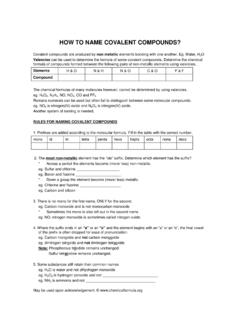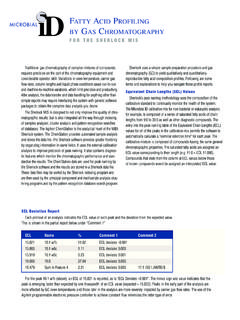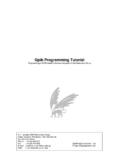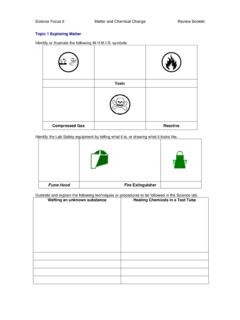Transcription of Preliminaries… - Paul Maxson
1 WinJUPOS tutorial for everyone. Milika & Nicholas 1 This tutorial covers the use of WinJUPOS using the De-rotation of and De-rotation of R/G/B processes there is also the De-rotation of avi which is not covered here. Also, you can take 3 longish avi s (maximum 6 minutes per channel Saturn, 3 minutes Jupiter) & process the image from each channel and combine them, essentially using the same method as the following: but specifically the method here outlines combining images from 3 sets of classic rgb runs (eg, 6 minute maximum for Saturn, 3 minute maximum for Jupiter.)
2 You'll need 3 sets of rgb's taken in reasonable seeing on any one taken one after the other so that the total time span from the start of the first set to the end of the last set isn't overly long (some small delays I'm sure can be accommodated - that's just my suggestion for optimum ) You'll need to process your avi's in Registax and AstraImage or whatever processing regimen you favour, and save the outcomes as .png says it will accept .tif files, but it haven't managed to get it to!!! I first need to work out the mid-point time of each single channel s processed file (FireCapture's logs make this easy!)
3 And convert this value to Universal Time, and make sure you check what the day/date is also for each: the date can change over an imaging session - I use "Jupiter2" to give me UT's as it's a simple program to the data you're using is old and you live in an area where there's daylight saving, make sure you factor that in also!!! So let's say you have 3 sets of rgb' means you'll end up with 3 processed .png file outcomes in each , starting with nine in all. Both Registax & AstraImage will save as .png files. Loading processed files & aligning/measuring Start by opening WinJUPOS and click on "Program" > "celestial body" and choose "Saturn" if that's the planet in Use the help info of WinJUPOS to acquaint you with what all the keyboard functions and re-read it is my suggestion - it took me several reads to get the gist, mainly about moving the image and the frame!
4 Then click on "Recording" and select "Image measurement" and another (large) window will open on top of the original (it looks like WinJUPOS has a "double" window.) WinJUPOS tutorial for everyone. Milika & Nicholas 2 Up the top left hand side the "Imag." tab should be highlighted with an orange/brown bar above below here is the "Open image (F7)" Your planet image will appear along with an Alignment frame - although the two will most probably be quite out of kilter with each other as per the next Once you've opened one of your images you have to enter the time (seconds as decimal points of a minute) as well as the geographical location of where you took the images (latitude & longitude).
5 You can save these co-ordinates for any imaging site by using the black arrow button just below the latitude Note the filename and path are at the very bottom of the windows. WinJUPOS tutorial for everyone. Milika & Nicholas 3 Once you've entered all the correct figures, click on the "Adj." tab next to the "Imag." tab - this is where you set up the alignment frame and planet image accurately so that WinJUPOS can accurately measure the image for its calculations for This is a red filter/channel select this in the dropdown box titled Channel (F9) This is where you should really have read the Help info in WinJUPOS re all the various controls you can see a couple of them are incorrect !
6 Altering the Brightness or Contrast may help you see the planet within the Alignment frame Most important are your Page Up and Page Down keys for altering the size of the Alignment ordinary up & down arrow keys of the keyboard for moving the Alignment frame up and down and the Left & Right arrow keys for shifting the frame left & N & P keys rotate the Alignment frame independently of the L & R rotate both the planet & Alignment Jupiter uses a simpler alignment frame than Saturn which isn t necessarily easier to set up (I find having an outline for the rings as well as the disk is a bonus on the same keyboard controls work on both planets.)
7 For Jupiter that control H will align the frame and planet horizontally on the screen (when they re synched) whilst F11 is an automatic alignment operation that works need to be aware of North & South with Jove but you should find it very similar to Saturn in nearly all respects otherwise. WinJUPOS tutorial for everyone. Milika & Nicholas 4 Using the above keys (except the L & R ) I have positioned the Alignment frame around the planet you will note that I have made the frame a little larger ( Page Up ) than the planet to assist me in determining if the planet is centred within the t be fooled with Saturn by looking at the disk unless you ve adjusted the brightness etc the polar regions are quite dark and I find it best to look at how centred the Alignment frame is around the ring system as well as the sides of the disk!
8 In the following image I have shrunk the Alignment frame to fit snugly around Saturn and also enabled control H to get the pair of them aligned horizontally on the screen! Using the Outline frame button on the LHS is meant to align both the frame and planet but this doesn t seem to adjust the pair of them accurately in my experience, and I ve found that manual positioning/alignment as above gave me the best your mileage may vary as they say! WinJUPOS tutorial for everyone. Milika & Nicholas 5 At this point it pays to use the arrow keys (once you ve snugged the frame around the planet using Page Down ) to double-check if they are indeed accurately moving the frame one shift up and one shift down as well as one shift left & right we can easily see if the frame is indeed centred around the planet when the frame is to see what gaps there are with said Then it s back to the Imag.
9 Tab and click Save (F2) Your image will be saved as an .ims sure you go to the correct folder to save it!!! Also note that the WinJUPOS .ims filename has the date & timestamp in is important because when you make a combined image from all 3 .ims files in each filter it will apply a date & timestamp to this combination, and this is what you must use when you combine each of the compound images for your final RGB ! Note also that I have added (highlighted) 1r to the front of the means this is the first of the 3 red channel measured images I am doing (remember, the 3 sets of rgb s are WinJUPOS processed by measuring and obtaining an.)
10 Ims file for each single red, green & blue and then combining the 3 reds, the 3 greens & the 3 then combining those final 3 compound red, green & blue images for the output rgb !) WinJUPOS tutorial for everyone. Milika & Nicholas 6 Now when you open the second red image you ll notice that it is much closer to being accurately aligned than the first one we opened, and much easier to ! Don t forget to check that the date is correct for when we put in the UT details for this 2nd red is why you used Jupiter2 or some (depending upon what time you were imaging) the UT day date may change between images in any one !







